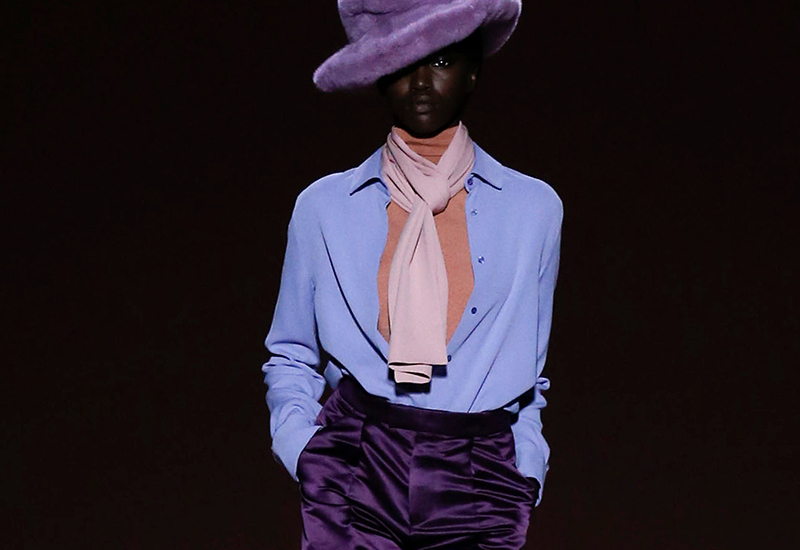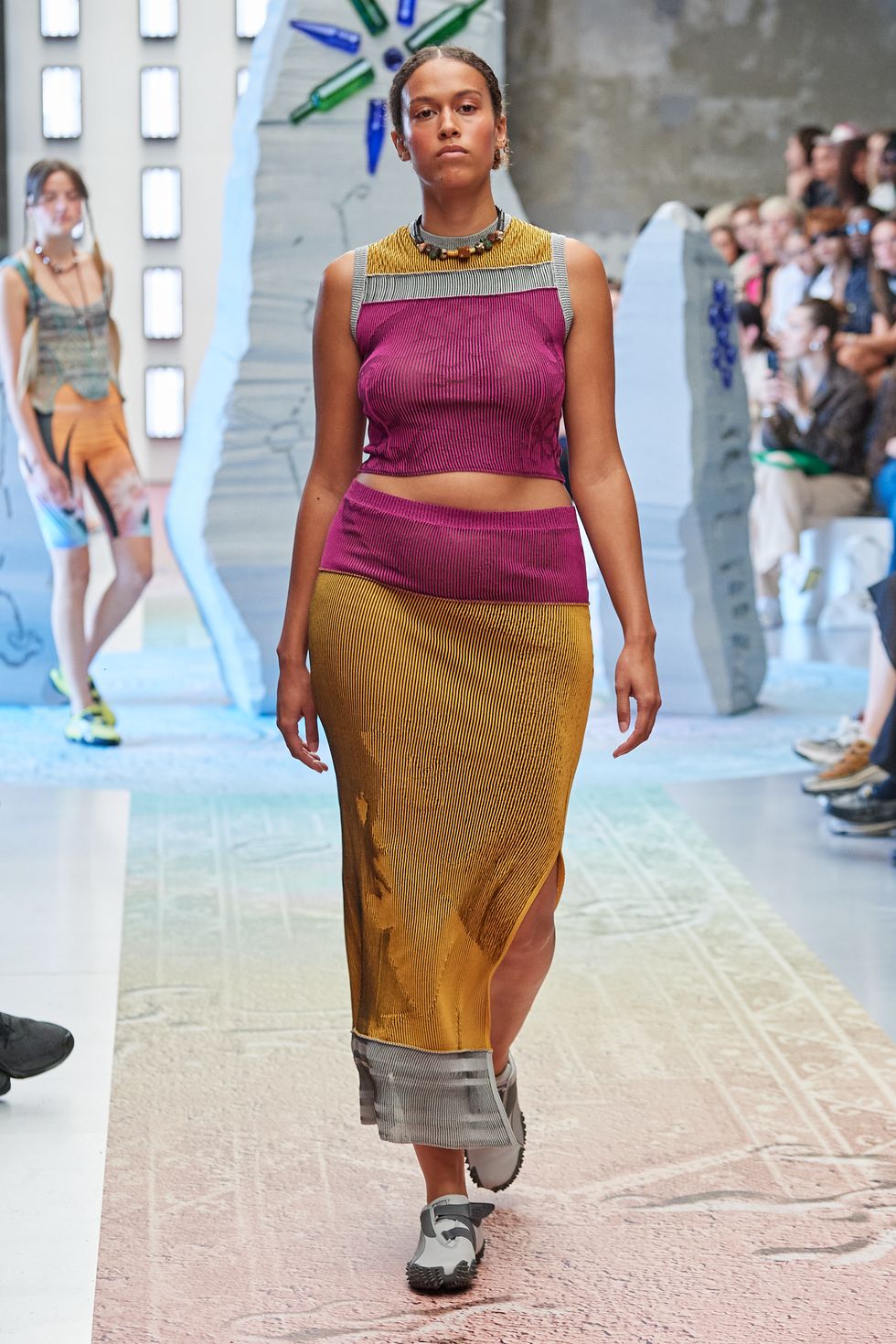The Sedgars Guide to Building a Capsule Wardrobe for All Seasons
The Influence of Sustainable Practices on Modern Fashion Styles
Lasting techniques have reshaped contemporary style, driving a shift in the direction of green products and ethical manufacturing. Developers currently prefer natural cotton, recycled materials, and innovative textiles. Upcycling has actually transformed waste into special garments, while transparency in sourcing has ended up being important. This evolution shows an expanding awareness amongst customers concerning their investing in options. As the industry adapts, brand-new fads emerge that obstacle typical appearances. What might the future hold for fashion in this framework?
The Increase of Eco-Friendly Products
How have environmentally friendly materials transformed the garment industry? The appearance of green products has considerably improved fashion, driving brand names to reconsider their sourcing and manufacturing procedures. These sustainable alternatives, including natural cotton, hemp, and recycled polyester, provide a lowered environmental footprint contrasted to typical fabrics. Developers are now focusing on these materials, identifying that consumers increasingly favor brands devoted to sustainability.This shift has resulted in innovative strategies, where style homes trying out natural dyes and biodegradable textiles, boosting both aesthetic allure and eco-friendly obligation. On top of that, cooperations in between developers and sustainability-focused firms have sped up the combination of green materials right into mainstream collections.As an outcome, the apparel industry is observing a extensive but progressive modification, relocating towards a much more lasting future. This dedication not just mirrors progressing customer worths however also demonstrates the potential for fashion to lead in ecological stewardship.
Upcycling: Changing Waste Into Fashion
Upcycling has actually become a transformative pressure in the apparel industry, transforming discarded materials into preferable garments and devices. This cutting-edge strategy not only reduces waste yet likewise urges creativity and creativity among developers. By repurposing things such as old apparel, fabric scraps, and also non-textile materials, upcycling creates distinct items that tell a story, mirroring individual design and environmental consciousness.Many contemporary brands and independent developers have accepted upcycling as a core technique, interesting customers who value sustainability and originality. The process typically entails strategies like reconfiguration, patchwork, or embellishment, enabling countless opportunities in layout. Therefore, upcycled fashion resonates with those looking for to make ecologically responsible choices while still sharing personal aesthetics.In significance, upcycling not only reduces the ecological influence of style waste yet also cultivates a brand-new culture of development and gratitude for craftsmanship within the market.
Moral Production: Fair Labor and Openness
Ethical production in fashion emphasizes the significance of reasonable incomes for employees, ensuring that workers receive just compensation for their efforts. Openness in supply chains is essential, allowing consumers to comprehend the beginnings of their garments and the conditions under which they are made. In addition, moral sourcing practices advertise obligation in choosing materials, strengthening the commitment to sustainability and social justice.
Fair Incomes for Employees
While the garment industry significantly welcomes lasting practices, guaranteeing reasonable earnings for workers remains a critical part of ethical manufacturing. Fair salaries not just empower workers but additionally boost the overall quality of life for people in the supply chain. Numerous brands are now taking on policies that focus on fair payment, recognizing that a lasting future can not be built on exploitation. By devoting to reasonable pay, business foster commitment and boost performance among their employees (Designer Store Sedgars). Additionally, customers are ending up being more knowledgeable about labor problems and are increasingly demanding openness relating to employees' rights. Because of this, brands that focus on reasonable incomes are not just straightening with moral standards but are also positioning themselves competitively in a market that worths social obligation
Openness in Supply Chains
The commitment to fair salaries is fundamentally linked to the broader concern of transparency in supply chains within the fashion business. Openness warranties that customers are educated about the beginnings of their apparel and the conditions under which they are produced. Brand names that focus on openness typically publish in-depth reports outlining their supply chain procedures, labor techniques, and sourcing of products. This visibility fosters count on and commitment among consumers who significantly demand ethical techniques. In addition, openness aids to hold firms responsible for their labor methods, allowing analysis and motivating renovations. By revealing the intricacies of their supply chains, brands can add to a much more equitable fashion ecological community, inevitably advertising not only ethical manufacturing however additionally lasting consumption among their clients.

Ethical Sourcing Practices
As customers end up being extra conscious of the effect of their acquiring decisions, brand names are increasingly taking on ethical sourcing methods that focus on reasonable labor and ecological sustainability. These practices entail guaranteeing that workers obtain reasonable salaries, safe working problems, and are treated with self-respect. Numerous fashion firms are relocating far from unscrupulous labor techniques and are rather teaming up with suppliers who follow honest requirements. Transparency in sourcing additional improves customer count on, as brand names disclose their supply chain practices, allowing customers to make educated choices. This shift in the direction of honest sourcing not just contributes to social duty however likewise resonates with an expanding market that worths sustainability in fashion. Because of this, moral sourcing is ending up being a defining attribute of contemporary style brands.
The Duty of Technology in Lasting Fashion
The fashion sector has long been linked with waste and pollution, innovation is progressively transforming it into a more sustainable sector. Innovations such as 3D printing enable designers to create garments with less product waste, while electronic material printing permits on-demand production, reducing excess supply. Furthermore, improvements in reusing modern technologies are promoting the repurposing of fabrics, minimizing land fill contributions.In enhancement, information analytics and man-made intelligence assistance brand names forecast fads a lot more properly, ensuring they generate only what is required. Blockchain modern technology improves openness in supply chains, allowing consumers to map the origins of their clothing and validate lasting methods. Moreover, wearable modern technology is progressing, advertising resilience and capability in vogue items. Via these technical innovations, the garment industry is slowly adopting a much more circular economic situation model, fostering sustainable methods that can redefine its environmental impact.

Mindful Consumerism: Changing Buyer Mindsets
Aware consumerism is reshaping the style sector as buyers significantly prioritize moral fashion options. This change is driven by a demand for openness, engaging brands to divulge their techniques and supply chains. Consequently, brand commitment is evolving, with customers most likely to support those that line up with their values.
Ethical Style Choices
Changing customer frame of minds towards moral style selections mirrors an expanding awareness of the effect of consumer habits on the atmosphere and culture. Consumers are increasingly prioritizing brands that emphasize ethical production methods, lasting materials, and reasonable labor problems. This modification is sustained by a need to support firms that align with individual worths, advertising a much more accountable apparel industry. Consequently, brands are adapting their strategies, integrating openness and sustainability right into their core objectives. Moral style selections not only test conventional retail practices but likewise encourage consumers to review the lifecycle of their garments. This change signifies a collective step towards a much more mindful approach to style, where the ramifications of acquisitions expand beyond simple aesthetics to encompass broader social and ecological considerations.
Effect of Openness

Brand Commitment Change
What drives customers to remain faithful to brand names in today's fashion landscape? Significantly, sustainability plays a pivotal function. As recognition of environmental problems grows, consumers are being attracted towards brands that demonstrate honest techniques and transparency. This shift towards aware consumerism has actually resulted in a reevaluation of conventional brand commitment, where worths align much more very closely with individual principles. Brand names that focus on lasting products, reasonable labor techniques, and eco-friendly production methods are frequently rewarded with customer loyalty. This development is reflected in purchasing decisions, as purchasers are more happy to sustain brands that add favorably to culture. Subsequently, sustainability has ended up being not simply an advertising device, however a specifying consider developing long lasting brand connections with a more critical and socially aware consumer base.
The Effect of Lasting Fashion on Fads
As customers progressively focus on sustainability, the garment industry is experiencing a considerable change in patterns. This shift has actually caused the increase of environmentally friendly products, such as natural cotton, recycled polyester, and ingenious textiles originated from lasting go now resources. Designers are increasingly concentrated on creating versatile, durable garments that urge mindful consumption, moving away from quick fashion's short lived styles.Moreover, ethical techniques are becoming a trademark of brand identification, with lots of business highlighting their dedication to reasonable labor and environmental stewardship. The influence of sustainable fashion is likewise evident in the popularity of thrift shopping and apparel swaps, promoting a round economic situation and reducing waste.Fashion programs and campaigns now typically include lasting collections, stressing the aesthetic allure of eco-conscious choices. On the whole, the influence of lasting fashion on trends reflects a broader social shift in the direction of liable consumerism, forming the future of the sector in extensive ways.
Future Technologies in Eco-Conscious Style
The development of lasting style trends lays the groundwork for future advancements in eco-conscious layout. As customers significantly prioritize ecological responsibility, developers are discovering sophisticated products and strategies. Eco-friendly fabrics, such as mycelium and algae-based textiles, are gaining grip, assuring to reduce waste and reliance on petroleum-based fibers.Moreover, improvements in modern technology are paving the method for ingenious manufacturing methods. 3D printing, as an example, permits for on-demand manufacturing, lessening excess inventory and resource usage. Circular style models are also arising, stressing recycling and upcycling, enabling garments to have actually expanded life cycles.Collaboration between brand names and innovation companies is important for these developments. By leveraging information analytics and man-made intelligence, developers can create extra lasting supply chains and lower their carbon footprints. As eco-conscious methods proceed to evolve, they fundamentally change the style landscape, pushing the boundaries of creativity while guarding the planet.
Often Asked Inquiries
Just How Can I Identify Sustainable Style Brands When Buying?
To identify sustainable fashion brands while shopping, one need to search for qualifications, inspect materials, evaluate production transparency, and study brand name values. Designer Store Sedgars. Involving with customer evaluations and sustainability reports can additionally direct informed acquiring decisions
Are Second-Hand Garments Considered Sustainable Style?
Second-hand garments are usually considered lasting fashion due to their function in decreasing waste and extending the lifecycle of garments. By acquiring previously owned products, consumers add to an extra environmentally friendly apparel economic situation.
What Is the Ecological Impact of Quick Fashion?
The ecological impact of rapid style is significant, adding to contamination, too much waste, and resource deficiency. The industry's fast manufacturing cycles often focus on profit over ecological sustainability, aggravating environment adjustment and damaging environments worldwide.
Just How Do Sustainable Practices Affect Fashion Prices?
Lasting practices usually result in greater production expenses as a result of honest sourcing and green materials. Sedgars South Africa. Fashion prices may raise, showing the financial investment in ecological duty and fair labor practices, which can influence consumer getting choices.
Can Lasting Fashion Be Stylish and elegant?
The question of whether lasting fashion can Click This Link be stylish and trendy commonly occurs. Many developers now mix green materials with innovative styles, confirming that sustainability and contemporary aesthetic appeals can coexist, interesting a fashion-conscious audience. Lasting methods have reshaped modern-day style, driving a change towards eco-friendly products and ethical manufacturing. While the style industry increasingly welcomes sustainable methods, making sure fair earnings for employees stays a critical part of moral manufacturing. Conscious consumerism is improving the style market as customers progressively prioritize moral fashion choices. The influence of lasting fashion is also evident in the appeal of thrift shopping and clothes swaps, advertising a circular economic climate and lowering waste.Fashion shows and projects now commonly feature lasting collections, stressing the visual charm of eco-conscious selections. To identify sustainable style brand names while shopping, one should look for qualifications, look at products, analyze manufacturing transparency, and study brand values.